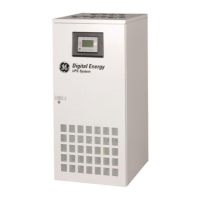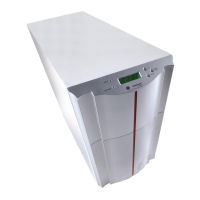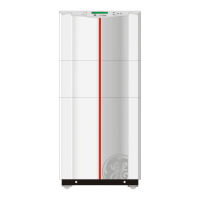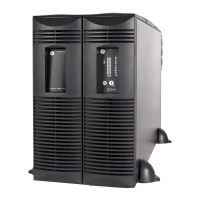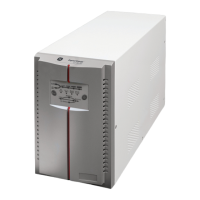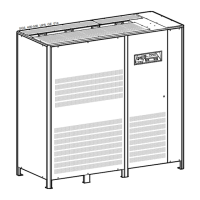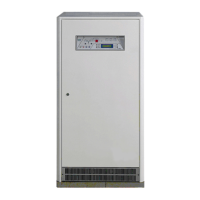OPM_LPS_33E_10K_30K_4CN_V010.doc 23/82 Operating Manual LP 33 / 10-20-30 kVA
4.5 VENTILATION AND COOLING
The heat produced by the UPS is transferred to the environment by its internal blowers.
Airflow through the UPS
It is important that the cooling air can freel
flow through the air inlets and outlets of the
UPS.
Fig. 4.5-1 Airflow through the LP 33
NOTE !
Insufficient distances on both sides of
the UPS could increase the temperature
inside the UPS.
Do not put any object on the top of the
cabinet: it might obstruct the air flow.
Heat evacuation from UPS room
The heat must be evacuated from the
environment with a proper cooling / ventilation
system provided by the user.
Fig. 4.5-2 Heat evacuation from UPS room
Air volume and losses of the UPS
The approximate minimum air volume needed to evacuate the heat generated by the UPS, for
inlet temperature max. 35°C (95°F), for the standard version at inverter nominal load with PF =
0.8 lag. and battery charged, are the following:
Air volume Losses
UPS model
On-line mode IEM mode On-line mode IEM mode
LP 33 / 10 kVA
250 m
3
/h 50 m
3
/h 0.79 kW 0.16 kW
LP 33 / 20 kVA
500 m
3
/h 100 m
3
/h 1.58 kW 0.33 kW
LP 33 / 30 kVA
700 m
3
/h 150 m
3
/h 2.37 kW 0.49 kW
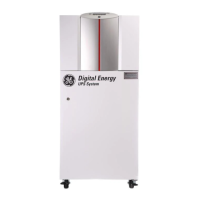
